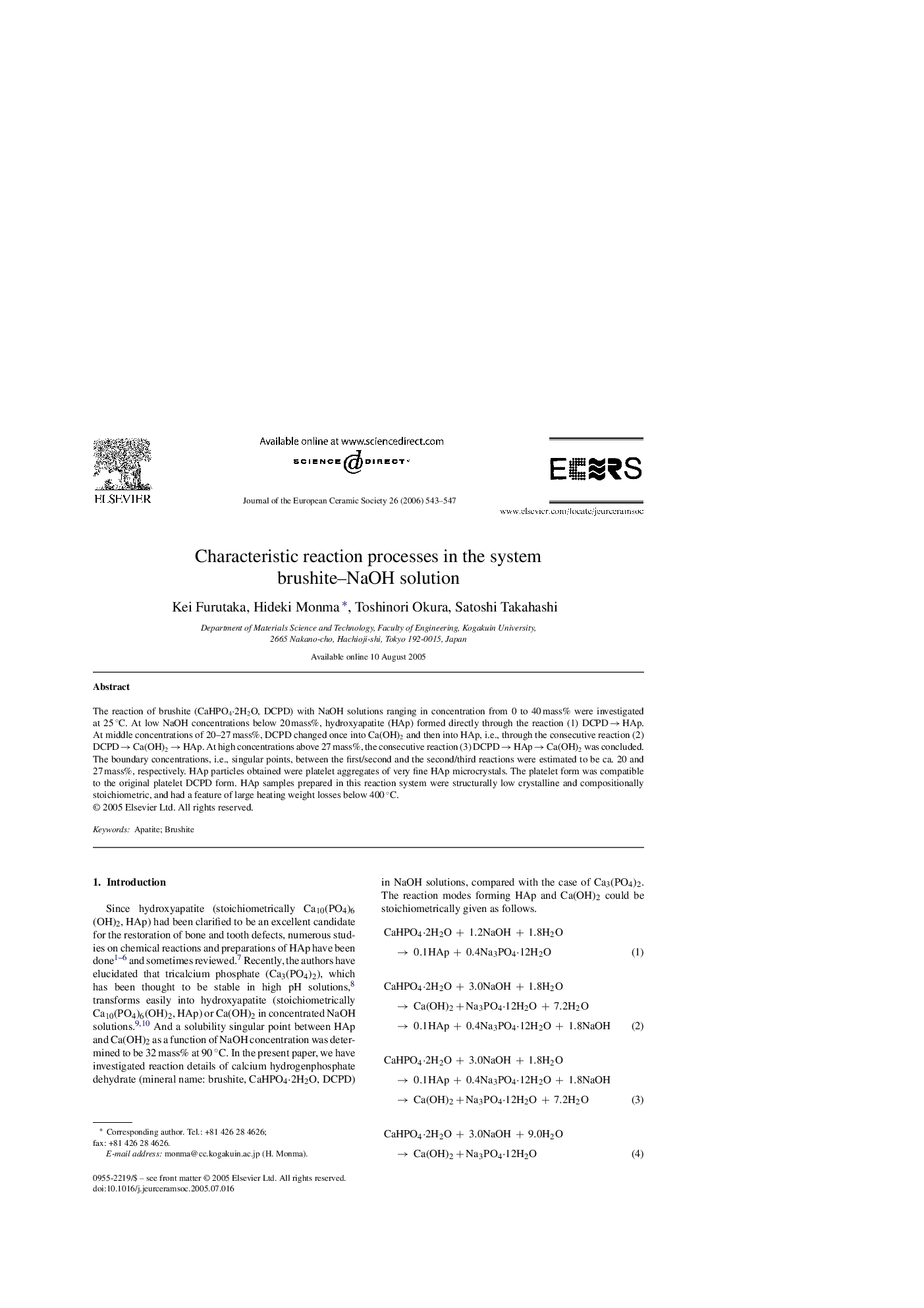| Article ID | Journal | Published Year | Pages | File Type |
|---|---|---|---|---|
| 1478860 | Journal of the European Ceramic Society | 2006 | 5 Pages |
The reaction of brushite (CaHPO4·2H2O, DCPD) with NaOH solutions ranging in concentration from 0 to 40 mass% were investigated at 25 °C. At low NaOH concentrations below 20 mass%, hydroxyapatite (HAp) formed directly through the reaction (1) DCPD → HAp. At middle concentrations of 20–27 mass%, DCPD changed once into Ca(OH)2 and then into HAp, i.e., through the consecutive reaction (2) DCPD → Ca(OH)2 → HAp. At high concentrations above 27 mass%, the consecutive reaction (3) DCPD → HAp → Ca(OH)2 was concluded. The boundary concentrations, i.e., singular points, between the first/second and the second/third reactions were estimated to be ca. 20 and 27 mass%, respectively. HAp particles obtained were platelet aggregates of very fine HAp microcrystals. The platelet form was compatible to the original platelet DCPD form. HAp samples prepared in this reaction system were structurally low crystalline and compositionally stoichiometric, and had a feature of large heating weight losses below 400 °C.
